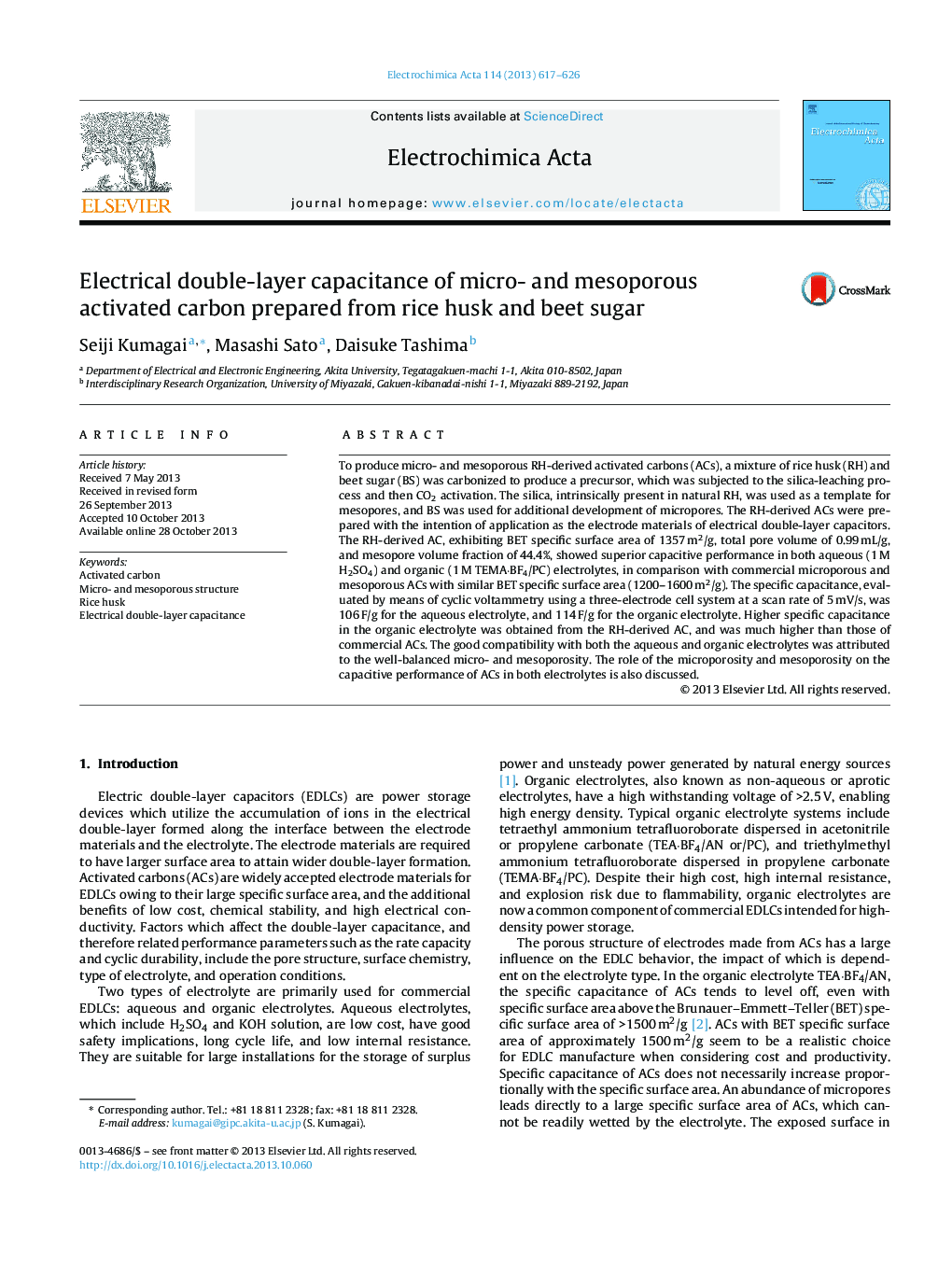| Article ID | Journal | Published Year | Pages | File Type |
|---|---|---|---|---|
| 186507 | Electrochimica Acta | 2013 | 10 Pages |
•Micro- and mesoporous activated carbon was prepared from rice husk and beet sugar.•Silica, which is intrinsically present in rice husk, was used as a natural template for the formation of mesopores.•Beet sugar was used for additional development of micropores.•The activated carbon exhibited good capacitive performance in both aqueous and organic electrolytes, in comparison with commercially available activated carbons.•Well-balanced micro- and mesoporosity contributed to the good compatibility of activated carbon with both aqueous and organic electrolytes.
To produce micro- and mesoporous RH-derived activated carbons (ACs), a mixture of rice husk (RH) and beet sugar (BS) was carbonized to produce a precursor, which was subjected to the silica-leaching process and then CO2 activation. The silica, intrinsically present in natural RH, was used as a template for mesopores, and BS was used for additional development of micropores. The RH-derived ACs were prepared with the intention of application as the electrode materials of electrical double-layer capacitors. The RH-derived AC, exhibiting BET specific surface area of 1357 m2/g, total pore volume of 0.99 mL/g, and mesopore volume fraction of 44.4%, showed superior capacitive performance in both aqueous (1 M H2SO4) and organic (1 M TEMA·BF4/PC) electrolytes, in comparison with commercial microporous and mesoporous ACs with similar BET specific surface area (1200–1600 m2/g). The specific capacitance, evaluated by means of cyclic voltammetry using a three-electrode cell system at a scan rate of 5 mV/s, was 106 F/g for the aqueous electrolyte, and 114 F/g for the organic electrolyte. Higher specific capacitance in the organic electrolyte was obtained from the RH-derived AC, and was much higher than those of commercial ACs. The good compatibility with both the aqueous and organic electrolytes was attributed to the well-balanced micro- and mesoporosity. The role of the microporosity and mesoporosity on the capacitive performance of ACs in both electrolytes is also discussed.
Graphical abstractPictorial representation of preparation of micro- and mesoporous activated carbon from rice husk and beet sugar, for electrical double-layer capacitor applications.Figure optionsDownload full-size imageDownload as PowerPoint slide
